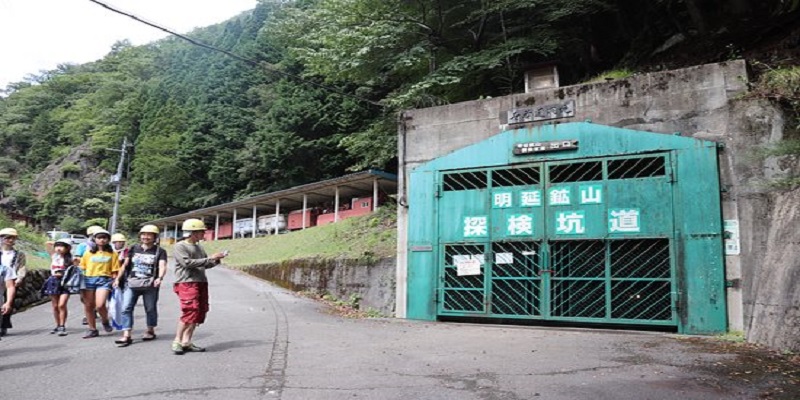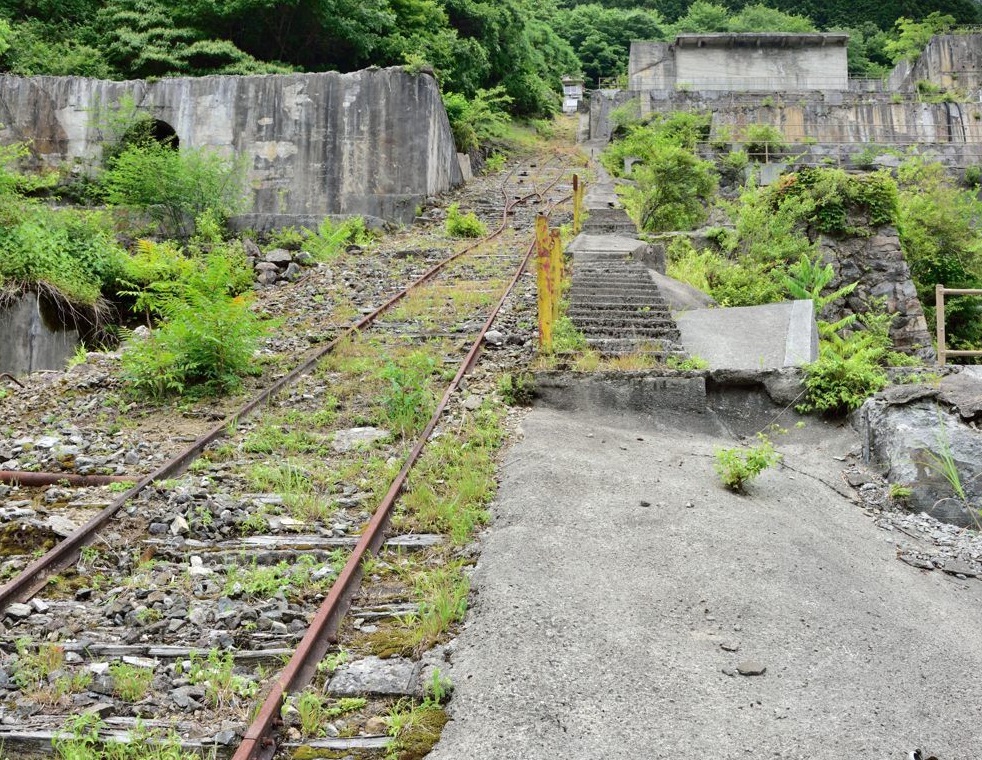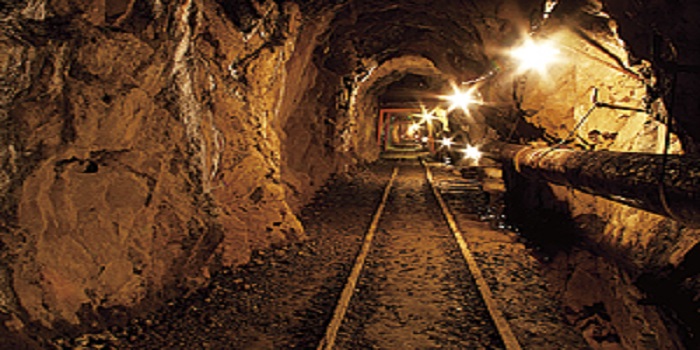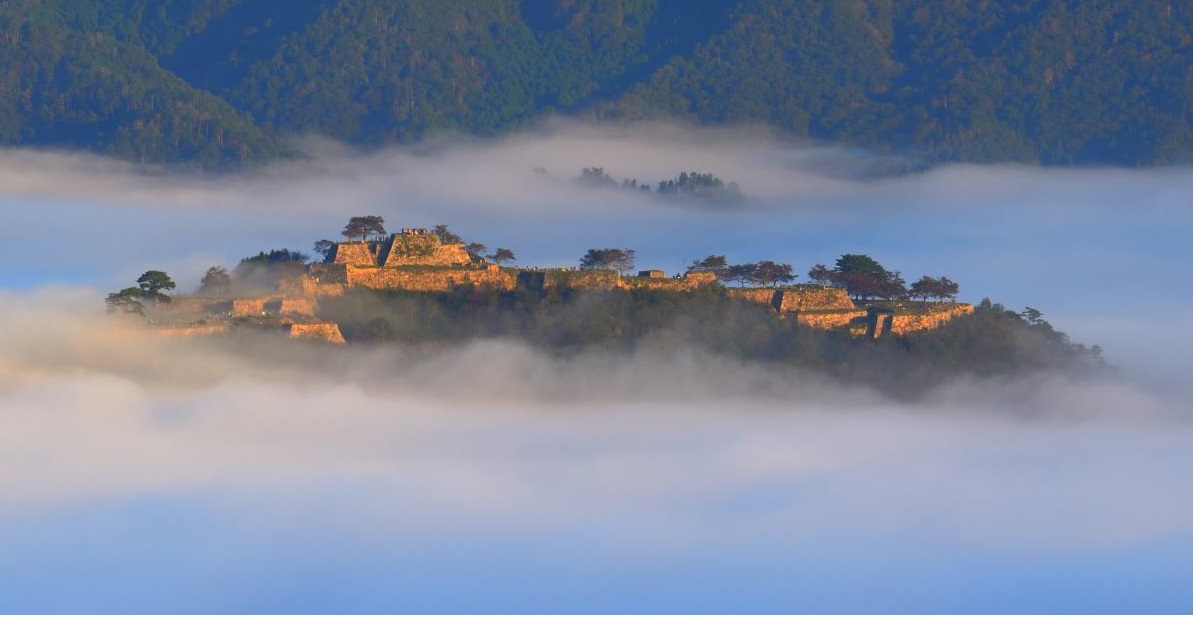“Akenobe Mine” and “Mikobata Ore Processing Site” were the important mine and the ore processing site that supported the modernization of Japan.
Both have ended the roles now.
Some parts of Akenobe Mine are open to public as Akenobe Mine Exploring track, and you can view the whole appearance of Mikobata Ore Processing Site, though you cannot get enter the inside.
Le me tell you each charm and the relation of these two remains.
Contents
Going around very track mine, Akenobe Mine Exploring Track
 image by tripadvisor.com
image by tripadvisor.comAlong the Prefectural road the 6th going from Shiso District to the direction of Yabu City, the inland of Hyogo Prefecture, there is an entrance of Akenobe mine track.
You cannot imagine that behind this door there continues the mine track of the total length of 550 km (longer than between Tokyo and Osaka!) and the depth of 1000m (deeper than Tokyo Sky-tree!).
Only a part of this mine tracks is open to public as Akenobe Mine Exploring Track.
For going around the course, you are required to go together with a guide, so you are to join the observation tour.
If every Sunday starting from the second Sunday of April through the last of October during 10AM and 3PM, you can join the tour from one person without reservation.
Other than that, the reservation is required three days in advance.
Admissions of the tour are 1200 Yen for older than high school students and 600 Yen for elementary and junior high school students.
Although it is just a part of the mine track that you will go around in the tour, it is quite long course as it takes 60 minutes.
As a result, you can very much enjoy as there are many places to see.

Although at facilities for tourism are often implemented such as concrete trails with handrails, in the ruins of Akenobe Mine, the status as it was at that time has been kept remained.
The history of Akenobe Mine is long.
There is a record that copper of Akenobe was used for casting of the big Buddha in the Nara Period.
During the Sengoku Era, it was ruled by Oda and Toyotomi, and it became jurisdiction of the Shogunate magistrate’s office during the Edo Period.
During the Meiji Era, it became under the government management, and was disposed to Mitsubishi later on.
Tin ore had been found in Meiji the 42nd (1909), and it developed as one of the best mines in Japan, producing multiple mining products, such as copper, zinc and tin, and it supported the modernization of Japan.
 image by wadachi73.jp
image by wadachi73.jpAs the price of metals worldwide had dropped in Showa the 62nd (1987), the mine cannot keep the profit, and leaving plentiful resources underground, it was forced to be closed.
Inside the mine track, there remain rails on which small locomotives ran for transporting ore as these were at that time.
Usually WIFI is not available in isolated islands or isolated places, even at hotels or restaurants.
So, portble wifi is recommended.

Multi-layer structure of Akenobu Mine


The inside of mine track of 1000 m depth is multi-layer structure.
For this reason, there are stairs also in the observation course.
It is one of the charms of this exploring mine track that you can see around the inside of mine track three-dimensionally not just from on a flat course.


And, this is an elevator equipped in the shaft.
This is the aorta of Akenobe Mine, moving up and down from level -1 to -14.
Such facility also remains the same status as of that time.


The ruin of massive ore vein is the best must-see point in the observation course.
There is cavity of 20 m above the mine track.
This was appeared after when the ore vein of good quality had been mined.
Equipment exhibited inside of the mine track and a sake brewery


There are various equipment, which were used at that time, exhibited inside of Akenobe Mine Exploring Track.
The picture shows a locomotive with rechargeable battery that was used for transporting ore.
It was possible for wireless operation, and one person could operate two locomotives simultaneously.
You can also see various kinds of excavating machines.
The picture shows the machine called offset stoper that was used when excavating upward.


There is a sake brewery inside of the mine track.
Inside of the mine track is moderate of changes in temperature, no incoming light, and with appropriate humidity, and these are conditions good for aging brewed sake.
It is said that fruity and smooth Japanese sake can be brewed here.
Irresistible to ruin-lovers? Mikobata Ore Processing Site Ruins
“Mikobata Ore Processing Site Ruins” is located in Asago City, next to Yabu City where located Akeno Mine.
It is massive stair-casing ruins, and if you see it without prior knowledge, you have no idea at all what it is created for.
Among some ruin-lovers, it was much popular since before, and it is said that there are many people coming from afar to observe it.
Ore processing site is a facility for extracting metallic minerals from mined ore.
It starts processing it from above in order and moving it down.
Mikobata Ore Processing Site has been completed in the Taisho the 8th (1919), and with expansion of several times had been developed and became called as “number one in the East”.
There were 1300 persons living in the Mikobata area during the most flourished period, but it was shut down according to the close of Akenobe Mine.


There remain rails going straight from down at Mikobata Ore Processing Site Ruins.
These are the rails, on which were running cable cars called incline used for transporting materials and people to each working place.
Though I think that those who have read through to here have already noticed, they transported ore mined in Akenobe Mine to this Mikobata Ore Processing Site, and processed beneficiation.
When you see the rails of incline, you may presume that they transported ore to foot of the facility and moved to the top with incline, and then moved it down in order with beneficiation process.
But, it is not correct.
Akenobe Mine and Mikobata Ore Processing Site was connected by a railway at that time, so the train could arrive at the top of the facility through a tunnel.


At the bottom of Mikobata Ore Processing Site, there remains facility of disk-shaped.
This is the facility called “thickener”, and it was used for separating and collecting metallic minerals, by using centrifugal force, from ore that became like thick fluid.
There shaped like funnel, and it was designed that impurities of slime-like would be discharged to the bottom.
Soil made from this impurities from which water removed was reused for some scaffolds of the mine track.
One Yen Train And Old Mouchet House
As it wasintroduced just earlier, the train that ran between Akenobe Mine and Mikobata Ore Processing Site was this one Yen train.
Not only cargo cars for transporting ore, but also cars for people were connected.
Although it looks like trains in a playground, it is the real train used at that time.
Cars for people were deployed for employees’ commute as well as convenience of its family, and the fare at that time was one Yen, so it was named after then.
The picture shows the exhibition of train at Mikobata Ore Processing Site Ruins, but there is facility where you can actually get on the one Yen train nearby Akenobe Mine.


Just foot of Mikobata Ore Processing Site Ruins is “Old Mouchet House”.
Mouchet was working at Ikuno Mine and was a French geologist.
Old Mouchet House was built in 1872 as a residence of foreign engineer of Ikuno Mine, and Mouchet was living here.
This building was transferred to Mikobata in 1888, and was used as an office and a clinic.
It is saved as precious building that conveys construction culture of early Meiji.
Inside there are exhibits related to the history of Mikobata Ore Processing Site.
Looking at the model of ore processing site and photos of that time, you will be able to know how the facility, which is now a ruin, was used, and you will see the atmosphere full of energy.



Access To Akenobe Mine And Mikobata Ruins
There are no hotels around Mikobata and Akenobe mine.
In fact the closest hotel near Mikobata mine is GUEST HOUSE TENKU and Hotel EN which is located by Takeda Station.



To go to Akenobe Mine And Mikobata Ruins, you need to take taxi from Takeda station or Ni-i station.
From Takeda station, about 25 minutes and from Ni-i station, about 10 minutes to Mikobata Ruins.
So, it is safe to call taxi from the nearest hotel, GUEST HOUSE TENKU and Hotel EN or just ask how to visit.
The Road of Ore
I have introduced to two sites, Akenobe Mine and Mikobata Ore Processing Site, which greatly contributed to modernization of Japan, and how did you think about them?
These are the spots not just for sightseeing, but also where you can learn various things.
In Asago City, there is a famous mine called as “Ikuno Mine”, and though it is also closed, there is an observation course.
The connecting route among Akenobe – Mikobata – Ikuno is being promoted as “the road of ore”, the area of modernization industry heritage.
There remain various related heritages other than these introduced here.
Themes like mines and ore seem at a glance humble, but these are deeply attractive and very interesting world when you just see them.
Please try for sure going for a trip to see in your front the very place where created the foundation of today’s Japan.










![11 Maid Cafe Ranking in Tokyo [Recommended even to beginners and ladies!]](https://jatrabridge.com/wp-content/uploads/slider/cache/11597c33ae53b47eb36a2f67968e635f/Maid-Cafe-Ranking-in-Tokyo2.3.jpg)
























